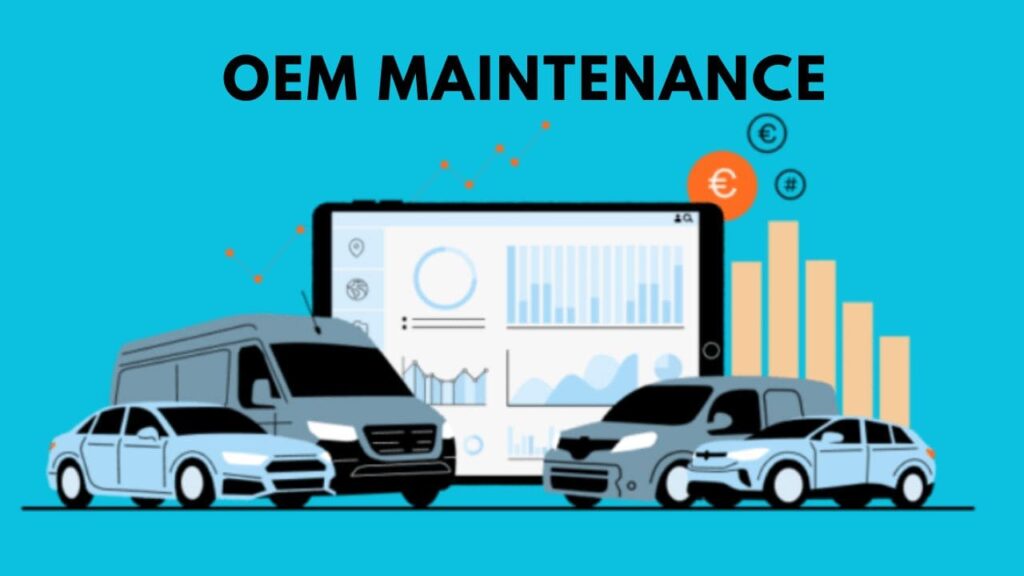Introduction of OEM Maintenance
In today’s fast-paced business world, having reliable and efficient IT equipment is crucial for success. However, maintaining this equipment can be a daunting task. That’s where Original Equipment Manufacturer (OEM) maintenance comes in. In this ultimate guide, we will explore what OEM maintenance is, its benefits, and why it is important for business IT equipment.
What is OEM Maintenance?
Before diving into the details, let’s start with a clear definition of OEM. OEM refers to the manufacturer of the equipment or software. OEM maintenance’s therefore, involves the maintenance and support services provided by the manufacturer.
Its maintenance plans come in various forms, including preventive, corrective, and predictive maintenance. Preventive maintenance involves regular inspections and servicing to prevent potential issues before they occur. Corrective maintenance focuses on fixing problems as they arise, while predictive maintenance uses data analytics to anticipate and resolve issues before they impact the equipment’s performance.
Cost is an important factor to consider when implementing an OEM maintenance plan. While the upfront investment may seem significant, the long-term benefits often outweigh the costs.
Benefits of OEM Maintenance Plan
Implementing an OEM maintenance plan for your business IT equipment brings several key benefits:
Increased Equipment Reliability:
OEM maintenance ensures that your equipment operates at optimal performance levels, reducing the risk of unexpected breakdowns. This reliability allows your business to maintain uninterrupted operations.
Cost Saving:
Although OEM maintenance involves a monetary investment, it can save your business money in the long run. By addressing potential issues early on, you can avoid costly repairs or equipment replacements.
Increased Equipment Life Span:
Regular maintenance by the OEM’s can extend the lifespan of your IT equipment. Proactively addressing issues and upgrading components when necessary can prevent premature equipment failure.
Better Performance:
OEM maintenance ensures that your equipment is operating at its highest potential. Regular inspections, software updates, and firmware maintenance contribute to improved performance, resulting in increased productivity and efficiency for your business.
Types of OEM Maintenance
OEM maintenance covers different aspects of your IT equipment. The following are the main types of maintenance provided by manufacturers:
Hardware Maintenance: This involves inspecting and repairing physical components such as servers, routers, switches, and storage devices. Regular checks ensure that the hardware is functioning optimally and that any potential issues are addressed promptly.
Software Maintenance: OEMs provide software updates and patches to address vulnerabilities, improve functionality, and enhance security. Regularly updating your software can prevent performance issues and protect your business from cyber threats.
Firmware Maintenance: Firmware is the software embedded within hardware devices. Regular firmware updates ensure that your equipment remains compatible with the latest software and maintains optimal performance.
Operating System Maintenance: Its also supports the maintenance of the operating system. Regular updates and patches are essential for improving system performance, security, and compatibility with other software and hardware components.
OEM Maintenance Process
The OEM maintenance process typically involves the following steps:
Diagnosis and Inspection: The OEM technician performs a comprehensive analysis of your equipment, detecting any existing or potential issues. This step allows for proactive action and the early prevention of potential failures.
Repairing Equipment: If any issues are identified during the diagnosis, the OEM’s technician will repair and replace faulty components promptly. OEMs have access to original parts, ensuring that the repairs are reliable and of high quality.
Upgrading Equipment: As technology evolves, equipment may require upgrades or enhancements to remain compatible with the latest software and industry standards. OEMs offer guidance and support in upgrading your equipment to maintain optimum performance levels.
Testing and Verification: Before returning the equipment to you, the OEM’s technician rigorously tests and verifies that all repairs and upgrades were successful. This step ensures that your equipment is functioning optimally and meets the necessary performance standards.
DIY OEM Maintenance Vs Hiring a Professional
While some businesses may consider handling maintenance tasks themselves, it is essential to weigh the pros and cons of DIY OEM maintenance’s versus hiring a professional:
Pros of DIY OEM Maintenance:
- Cost savings on service fees
- Flexibility in scheduling maintenance
- Control over the process
Cons of DIY OEM Maintenance:
- Lack of expertise and knowledge on complex equipment and software
- Risk of causing further damage or voiding warranties
- Time-consuming and potentially distracting from core business activities
Pros of Hiring a Professional:
- Expertise and specialized knowledge of the OEM technician
- Timely and efficient maintenance, reducing downtime
- Assurance of quality repairs and upgrades
Cons of Hiring a Professional:
- Cost associated with professional services
- The need to schedule appointments and coordinate with the OEM provider
How to Choose an OEM Maintenance Provider
When selecting an third party maintenance provider consider the following factors:
Reputation: Research the provider’s reputation in the industry. Look for customer reviews and testimonials to gauge their service quality and reliability.
Experience: Prioritize providers with extensive experience in maintaining and supporting your specific IT equipment. An experienced provider can quickly identify and resolve issues.
Availability: Ensure that the provider offers prompt and reliable support. Consider their response time, availability of technicians, and emergency services if required.
Cost: Compare pricing models and service packages offered by different providers. Evaluate the cost in relation to the level of service they provide.
When to Schedule OEM Maintenance
Determining the optimal time for OEM’s maintenance depends on several factors:
Frequency of Maintenance Depending on Equipment Age: Older equipment may require more frequent maintenance to prevent potential failures. Conversely, newer equipment may only require regular check-ups and updates.
Types of Equipment to Be Maintained: Different equipment types may require maintenance at different intervals. Consider the manufacturer’s recommendations and consult with the OEM to establish the appropriate schedule.
Analysis of Equipment Operations in Current Environment: Consider the workload and environment in which the equipment operates. Heavy usage or challenging environmental factors may require more frequent maintenance to ensure optimal performance.
Conclusion
Implementing an OEM maintenance plan is crucial for ensuring the reliability, performance, and longevity of your business IT equipment. By understanding the benefits of OEM maintenance’s the types of maintenance available, and the process involved, you can make informed decisions on whether to opt for DIY maintenance’s or hire a professional. Additionally, selecting the right OEM maintenance provider and scheduling maintenance at appropriate intervals will maximize the potential benefits and efficiency of your IT infrastructure. Trusting the OEM’s to maintain your equipment is a key step towards a well-functioning and reliable IT environment for your business.


